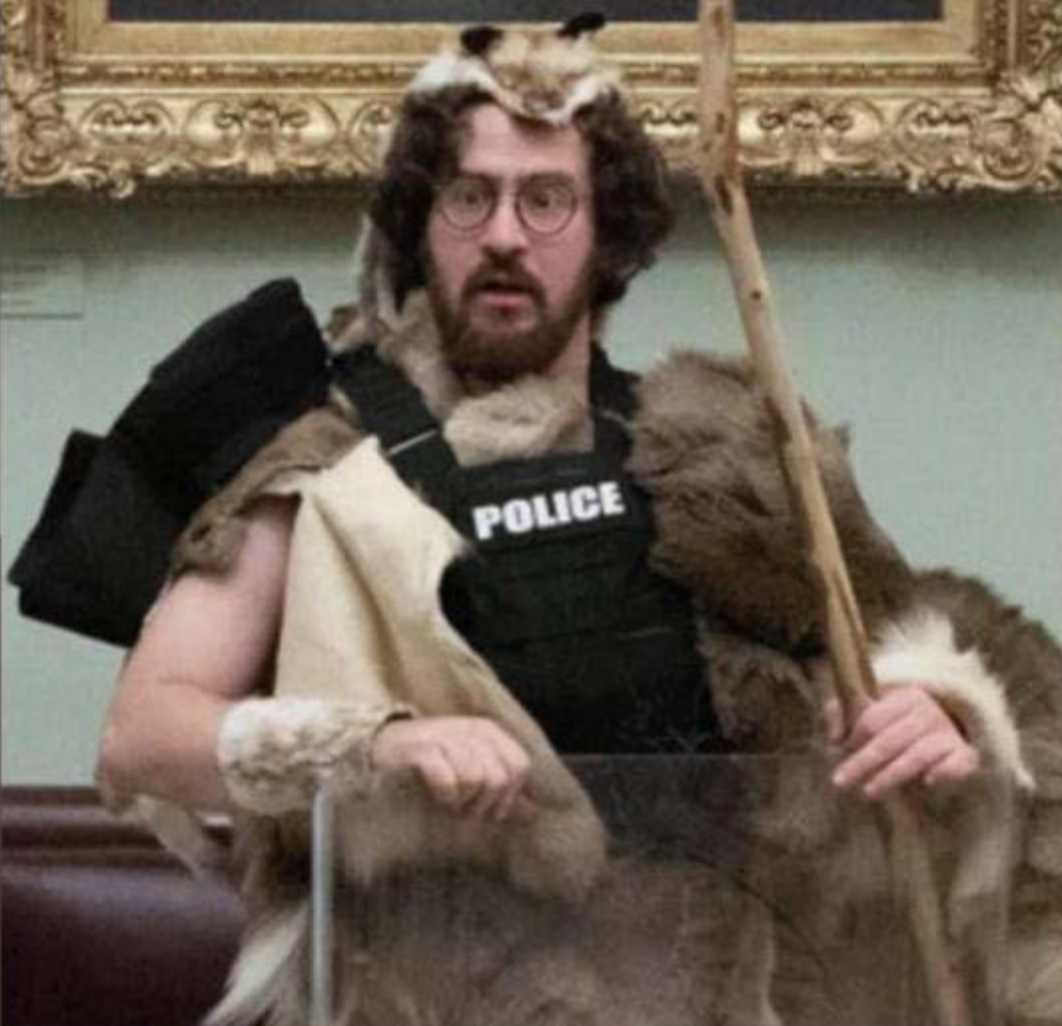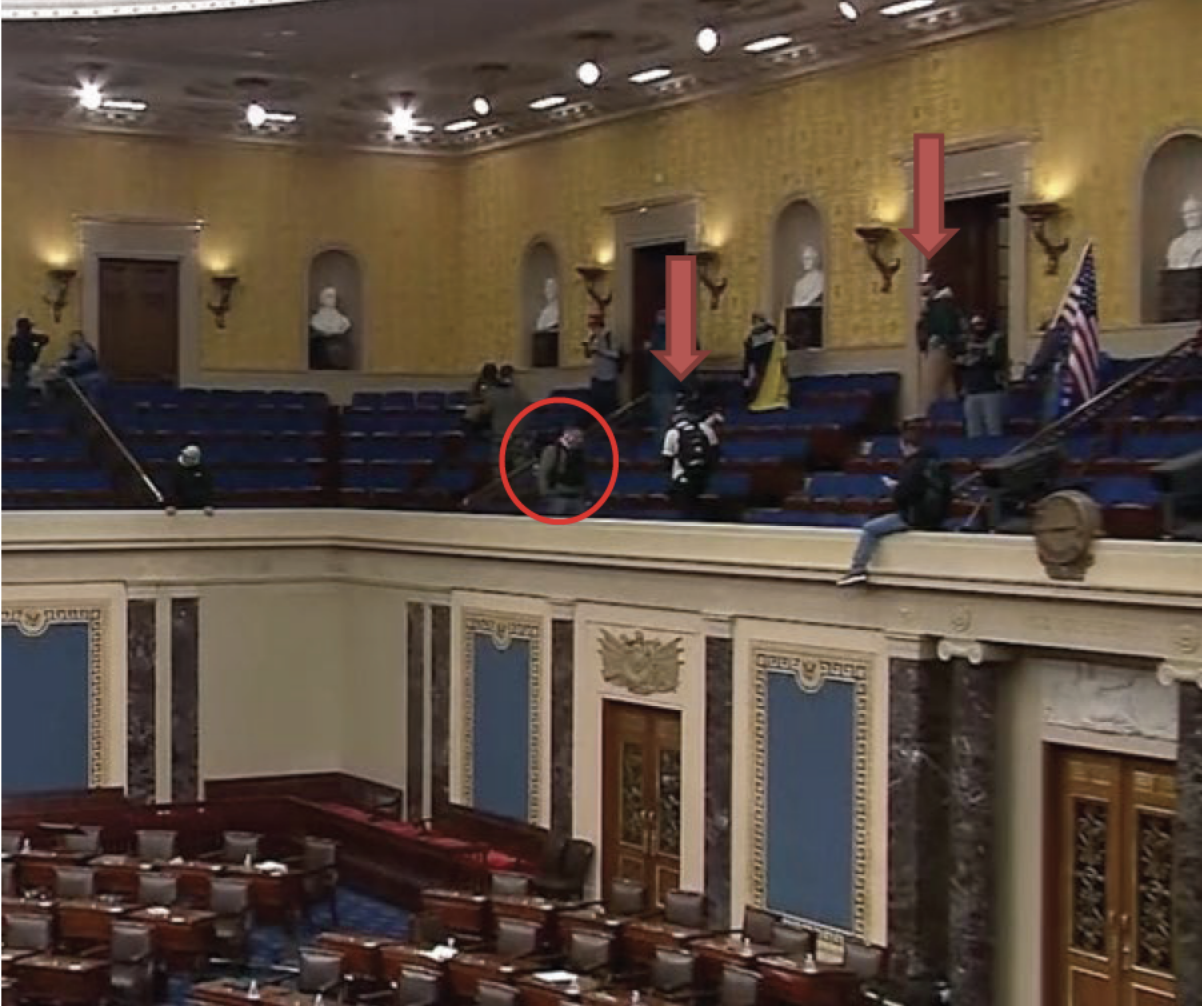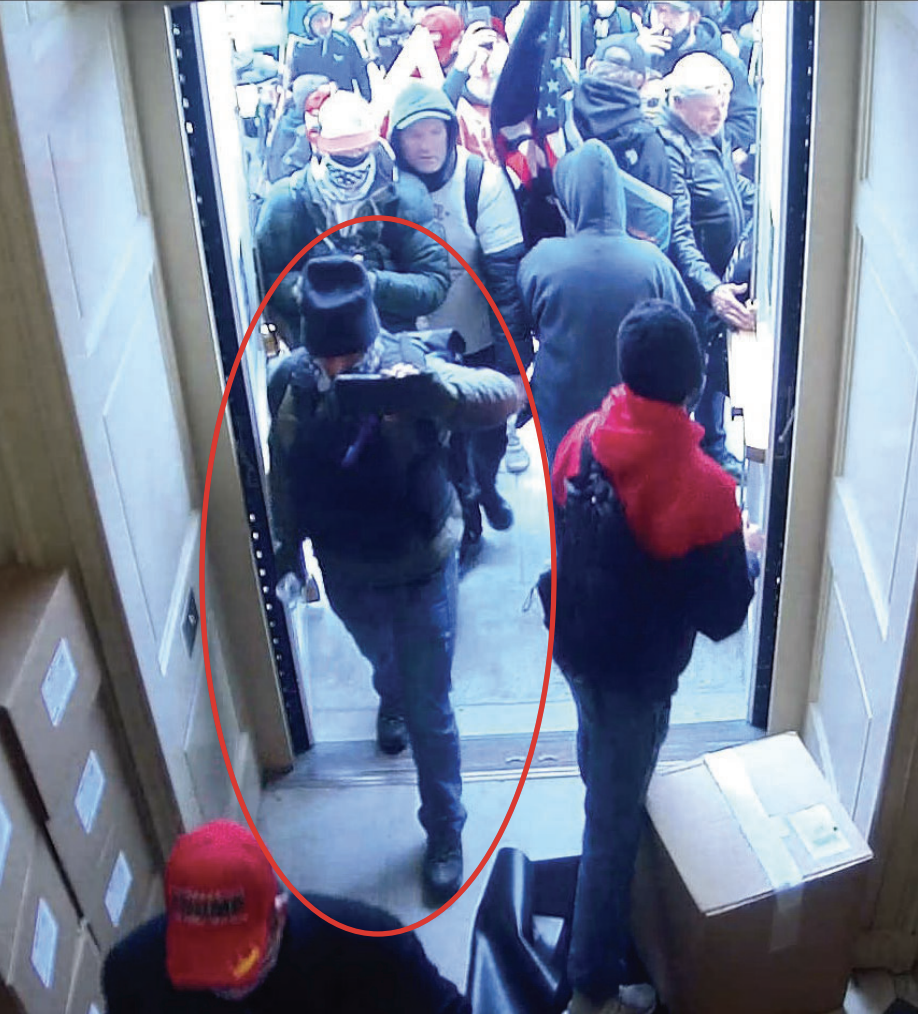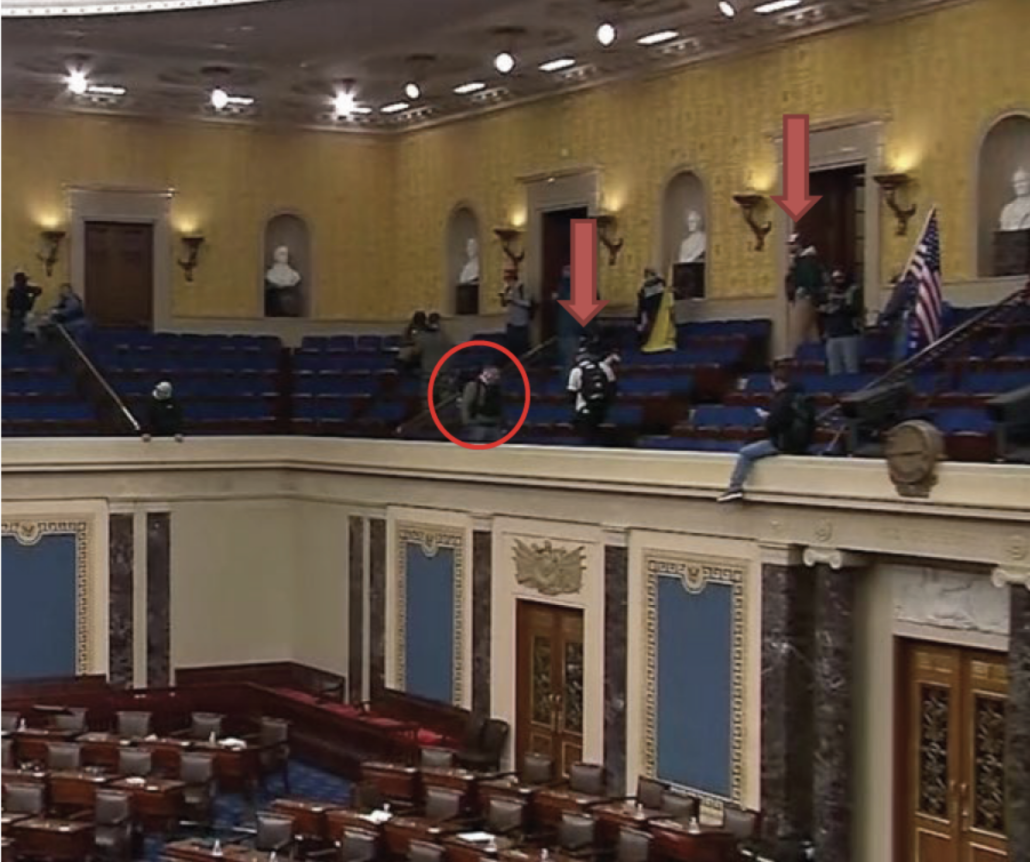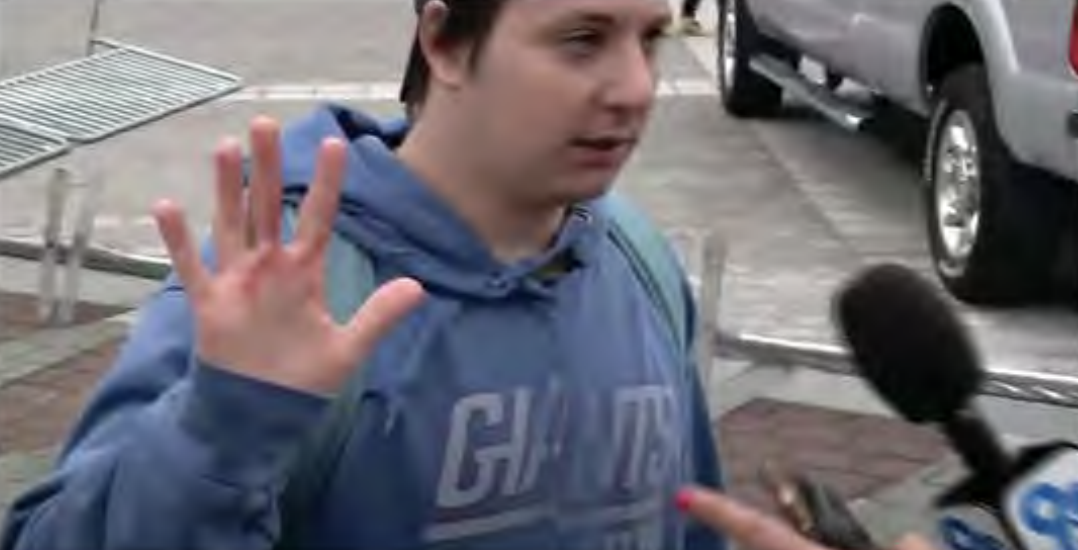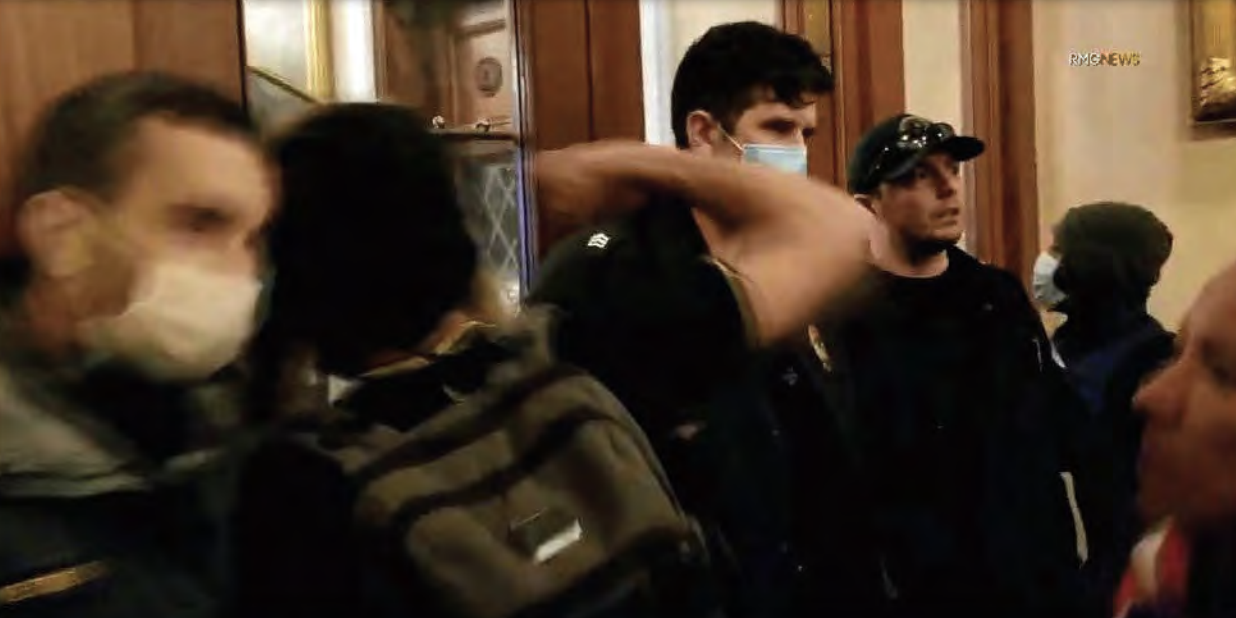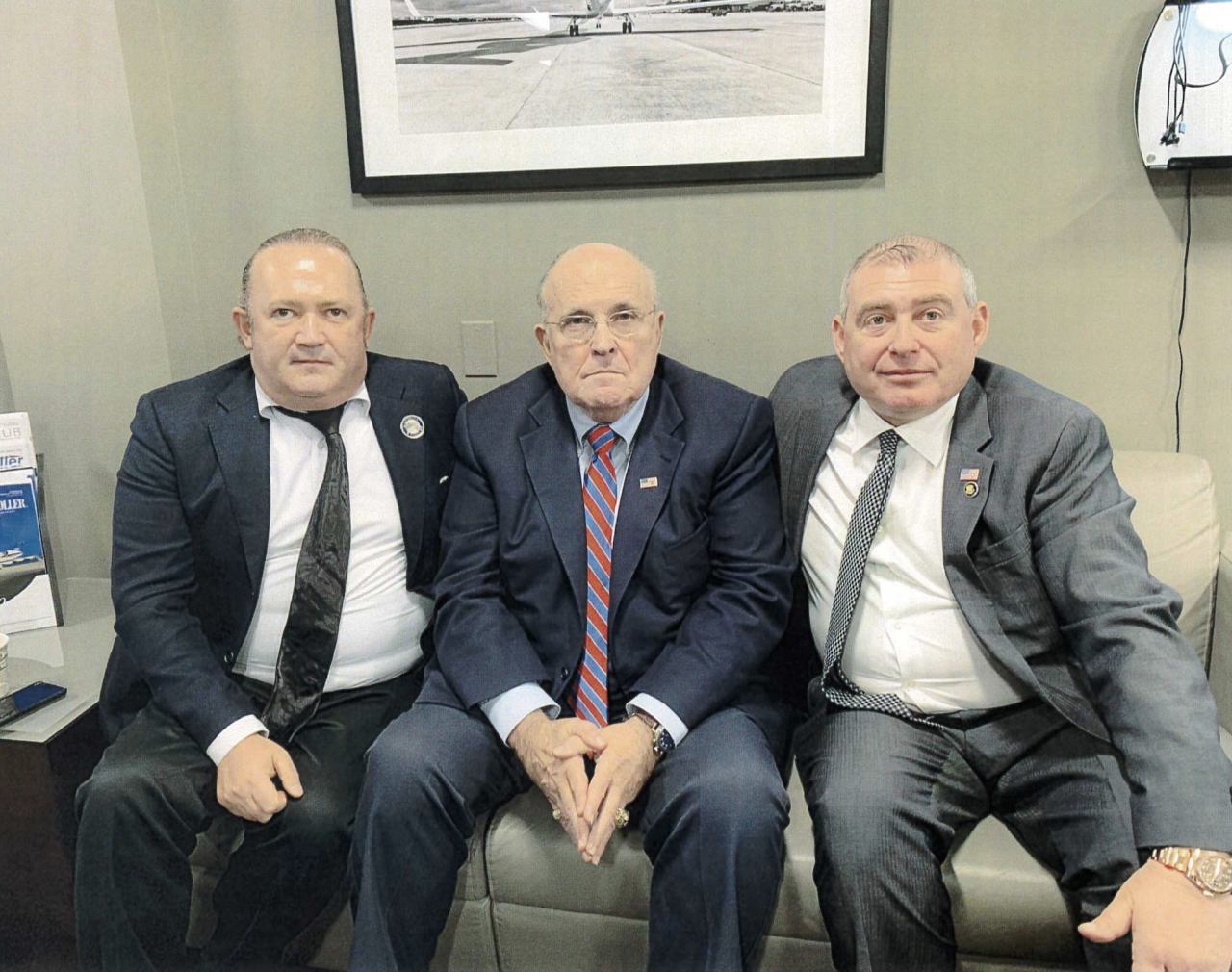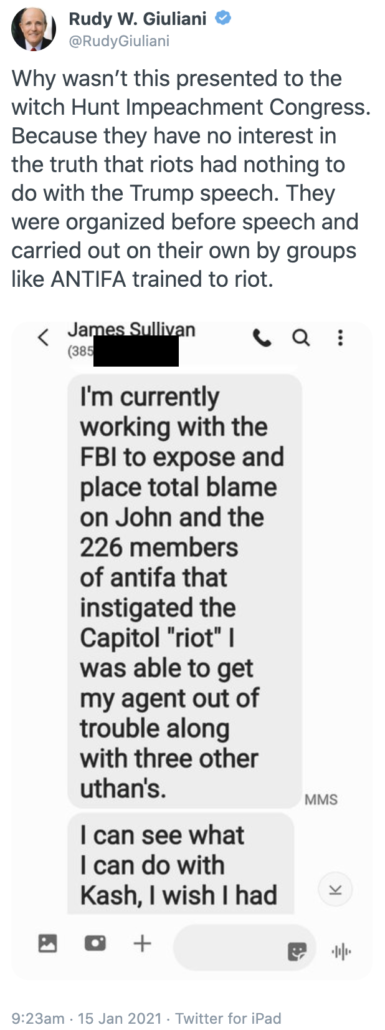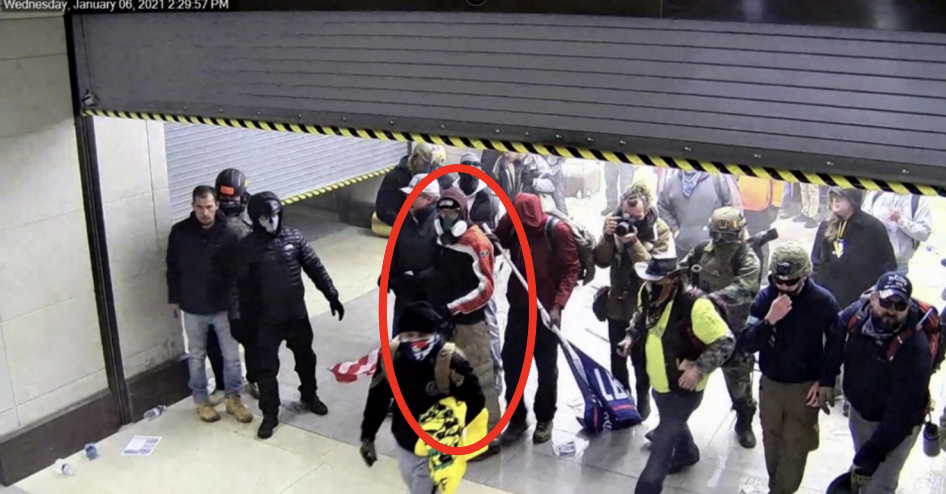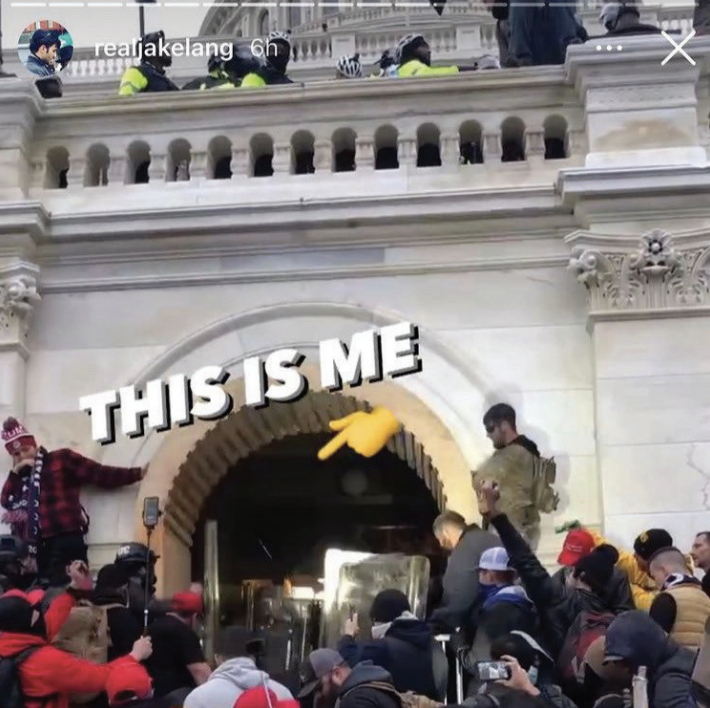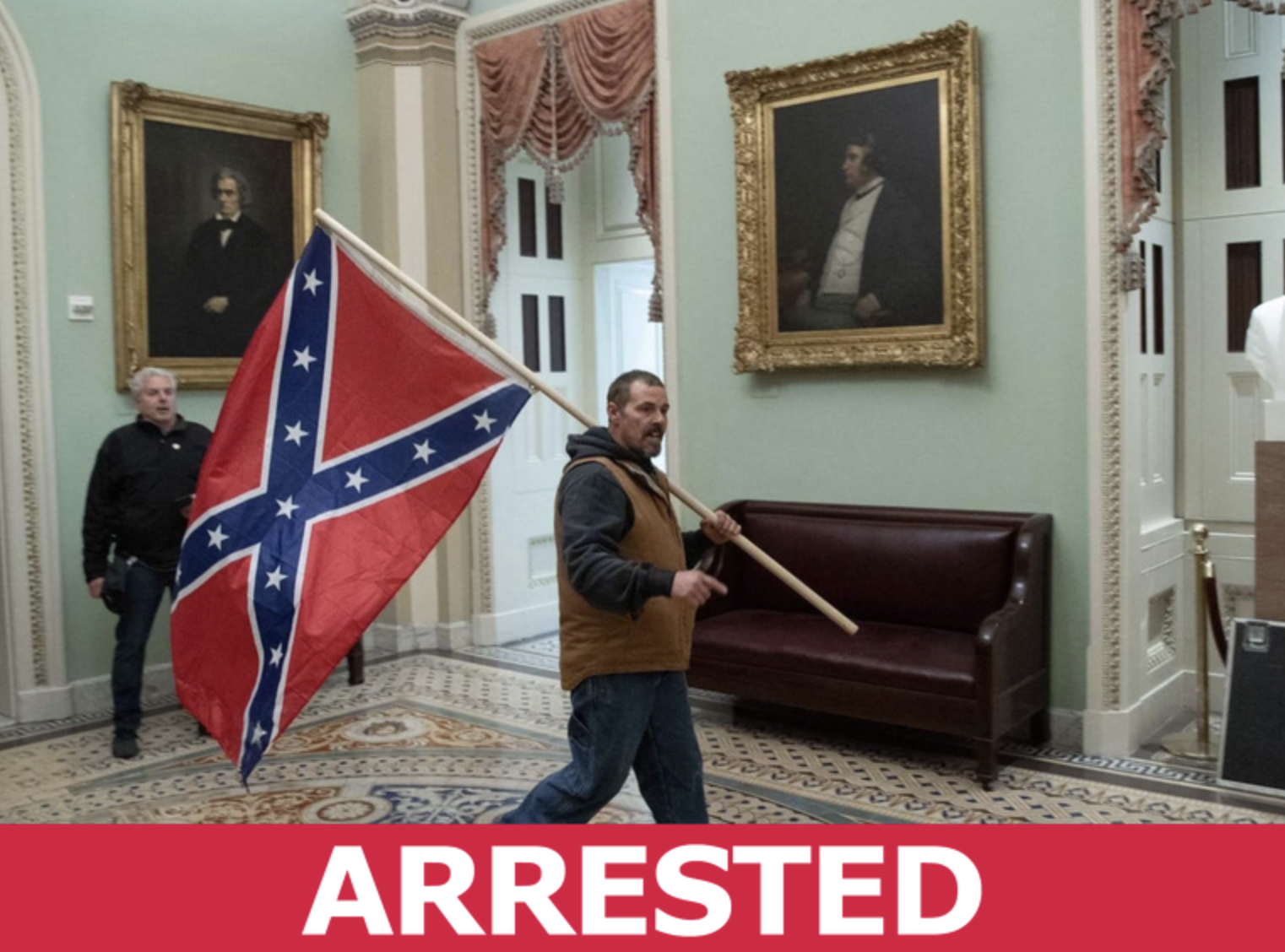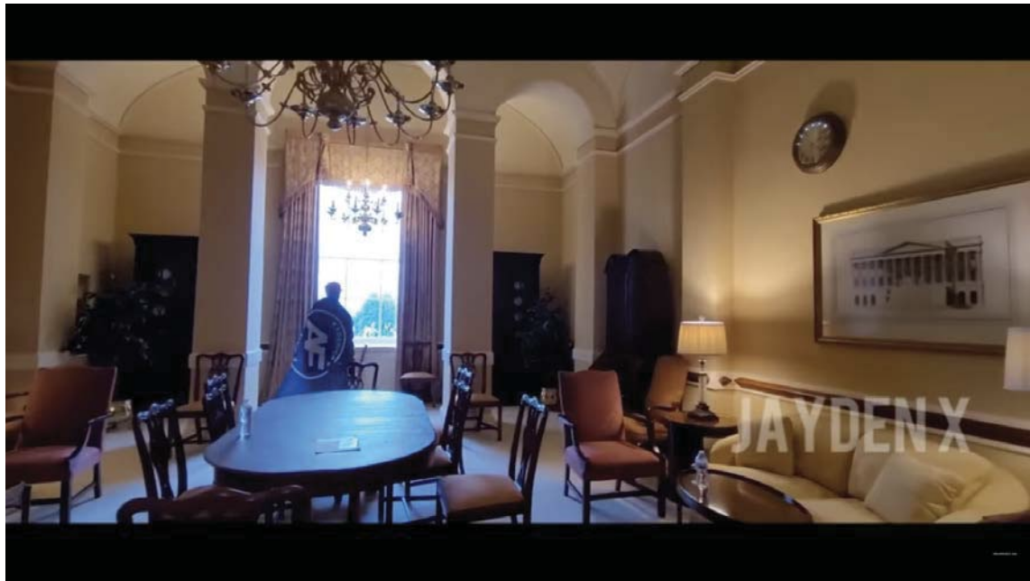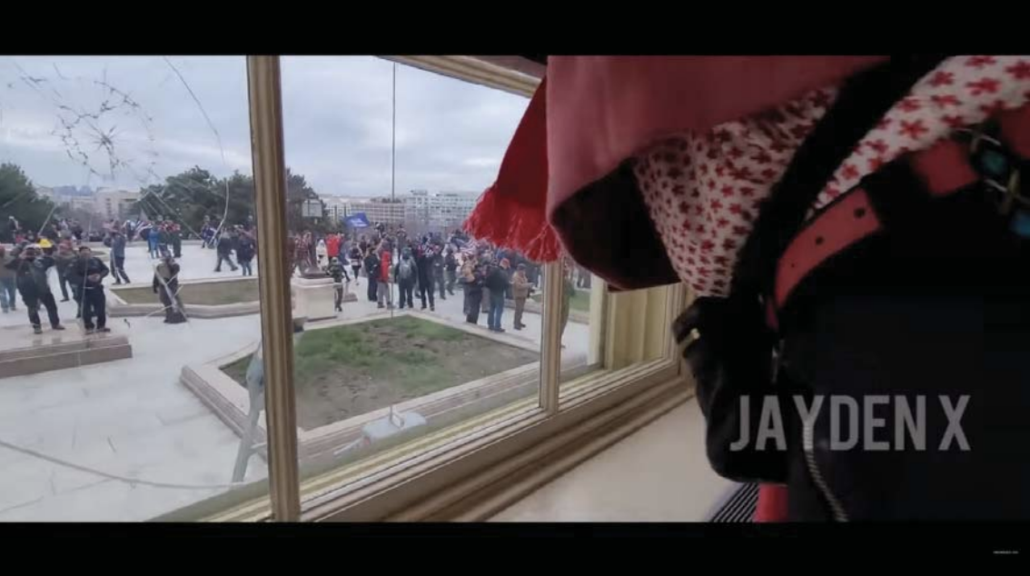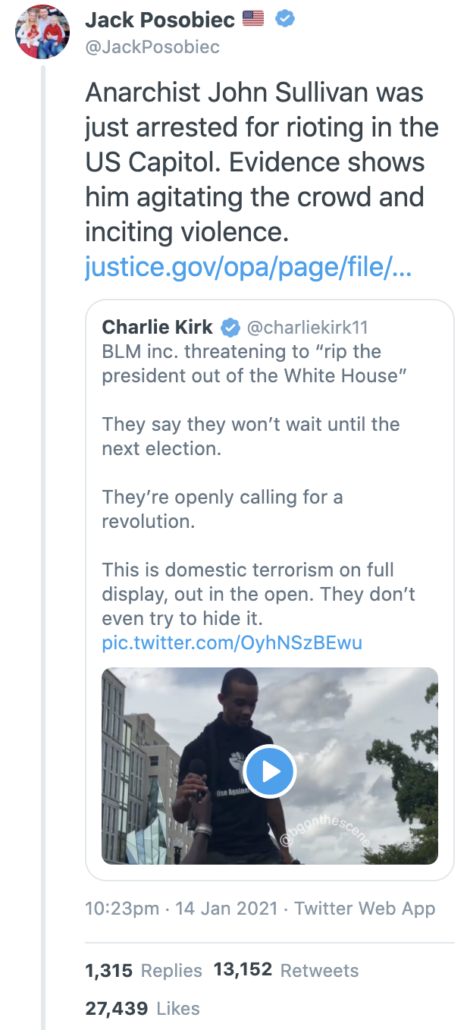In the Oversight Hearing on January 6 the other day, Paul Gosar suggested that Ashli Babbitt, who was shot while jumping through the last door protecting House members, had been executed.
Paul Gosar: Do you know who executed Ashli Babbitt? … The Capitol Police officer that did that shooting, Ashli Babb — appeared to be hiding, lying in wait, and he gave no warning before killing her.
As it happens, the day after Gosar made these comments, yet another insurrectionist who was standing with Babbitt when she was killed, Kurt Peterson, was arrested in Abraham Lincoln’s birthplace of Hodgenville, KY. According to his arrest warrant, prior to the insurrection, Peterson had accused Democratic lawmakers of treason that should be penalized with death. Peterson claimed to have been at the insurrection with three former Special Forces guys, all in their sixties.
After the insurrection, on January 10, Peterson posted an account on Facebook almost certainly intended to minimize his actions. He claimed, for example, to have entered through a back door that had been opened, and further claimed that when he entered, he told people not to hurt anyone or anything. (He recorded this on voice recognition software so the bracketed corrections are my own.)
When at the back door that we were at open[ed] and there and there were no police to restrain the crowd many people entered at that time. I stood at the door and told everyone that we were not there to hurt anybody or damage anything but as a show of solidarity to right the wrongs of the past election.
In fact, a video cited in his arrest warrant shows someone the government alleges to be him breaking an exterior window to the Capitol screaming, “This is our house. Let us in.”
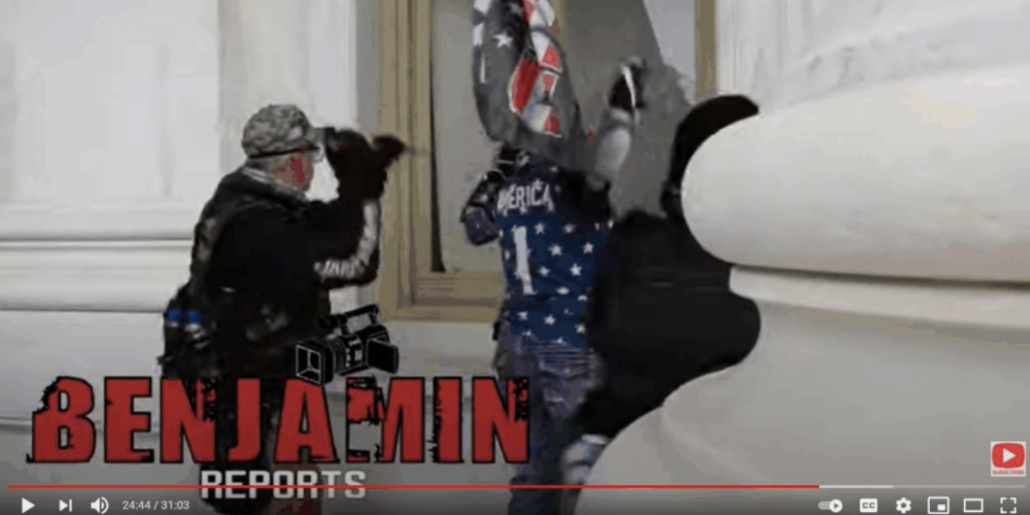
Peterson is accused of breaking that window, which cost $2,700 to repair. Causing more than $1,000 of damage under 18 U.S.C. §1361 can (and has been invoked to, in this investigation) carry a terrorism enhancement under 18 U.S.C. §2332(b)(g)(5). While it’s unlikely the government will do so with Peterson (they have done so primarily with militia members), given his politicized threats of violence in advance of the insurrection, Peterson could be charged with terrorism for breaking that window.
In the same self-serving account of the day, Peterson gave this account of witnessing Ashli Babbitt’s death.
I did stop men from trying to break down the large wooden doors to the house chamber. Then I saw chairs being brought into the corridor going to the speaker’s lobby. They also grabbed a large sign with a heavy metal base stating no photography. I pushed into the corridor yelling for them to stop trying to break through the doors into the speaker’s lobby. The woman who was shot used the leg of a chair to hit a glass panel on in the door. There were numerous police officers in the stair tower and hallway that I was in.
Before I could get to her the shot rang out from behind the doors in the speaker’s lobby through the glass which shattered hitting many [police] officers and people there. It was a young man in a suit who was supposedly a bodyguard for Chuck [S]chumer.
The bullet hit the woman in the neck which caused her to fall backwards [im]mediately. It could have hit numerous [police] officers that were there. Non lethal force could have been use[d] with out the lethal shot that was made by this body guard in the speaker’s lobby.
I had my 1st aid [gear] with me and asked numerous times to be allowed to render 1st aid to this woman. I was told that they were waiting for the fire department to [respond] and they would not let me give her 1st aid. She died on the floor within 10 minutes of the shot being made.
On the John Sullivan video, there’s no sound of Peterson warning anyone. Rather, there are cries of “Break it down!” with multiple calls before the shot that there was a gun just behind the door the mob was threatening to break down. Everyone in the front line, including Babbitt, should have heard warnings about, if not seen, the gun carefully aimed at the mobsters at the door.
Had non-lethal force been used, the mob might have become more inflamed than they already did. Indeed, many January 6 defendants excuse their behavior, including multiple people accused of assault, as retaliation to the use of non-lethal force.
Peterson suggests that police attending to Babbitt weren’t already giving her First Aid even as they were trying to clear the mob. It appears that another of the rioters, someone with a camera, responded even more quickly than Peterson, along with some of the cops. It is true that Peterson fumbled in his chest as if grabbing for gear. It’s also true that even before that, police were yelling at him to clear out so first responders could get to her. Another video shows that even more closely — as a long line of rioters were clearing a path, Peterson kept talking to the cops.
If the government’s accusations are true, one of the people accusing cops was, himself, dramatically understating his own involvement that day, including his alleged assault on the Capitol that could be (but has not) charged as terrorism.
Breaking down the door
But Peterson is not the only one. While DOJ has thus far charged only a relative handful of people who made up the mob screaming “Break it down!” who were present when Babbitt died, those present range from people accused of trespass to others whose damage to the Capitol could be charged with a terrorism enhancement.
Zach Alam: Zach Alam was the most determined of several men who broke the glass in the door through which Babbitt was trying to enter. Like Peterson, he is accused of damaging the building and obstructing the vote count. In addition, he is charged with assaulting police and civil disorder. A filing opposing his pre-trial release describes his action of the day as “agitated” and rightly notes he stood out among the mob during multiple confrontations with police (including one minutes earlier at the doors to the House Chamber). The video from the Speaker’s Lobby door shows him punching and then kicking the door, then using Christopher Grider’s helmet to hit the panes.
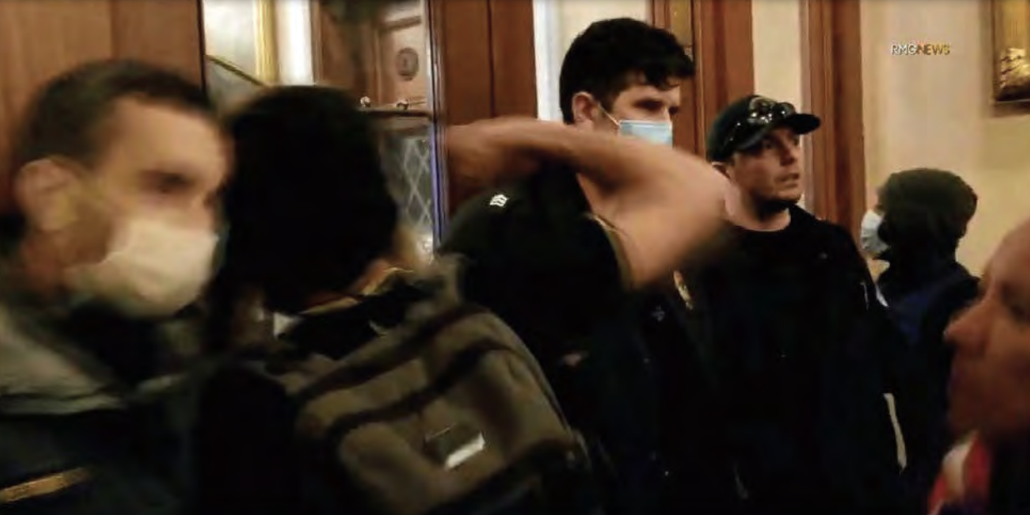
Alam went on the run after January 6 because — as he told a family member — he didn’t want to go back to jail again (he has some recent arrests in DC). During this period on the lam, Alam used at least one assumed name, stolen license plates, and false identification.
Lawfully obtained records show that the defendant has provided multiple false names to service providers, including at least one false name – “Zachary Studabaker” – for services since the events of January 6, 2021.
In addition, according to the government’s information, the defendant was at the time of his arrest driving a vehicle that he had purchased around September 2020 but never registered, and for which the defendant had used multiple license plates, including in recent months. These include a Washington, D.C. license plate, found inside the defendant’s vehicle in Pennsylvania, which was reported stolen in 2018 by an individual who indicated that the front license plate was taken off his vehicle while parked in Northwest D.C. D.C. traffic cameras captured a black Chevy truck matching the description of the defendant’s vehicle bearing this license plate as recently as January 4, 2021. Moreover, when agents located the defendant at the motel in Pennsylvania, they observed the defendant’s black Chevy truck parked outside and noted that it bore Pennsylvania license plates for a Mazda vehicle.
Upon arrest, moreover, the defendant had multiple identification cards in his wallet, including a D.C. driver’s license and a D.C. identification card for one male, a Permanent Resident card for a second male, and University student identification card for a female. Among the items agents seized from the defendant’s motel room nightstand, moreover, were two mobile phones – a Verizon flip phone as well as an iPhone.
Per the same filing, Pennsylvania state authorities are also investigating Alam in conjunction with the January 29, 2021 burglary of an antique store.
This is the kind of defendant whose violence Babbitt was part of. Had Babbitt survived, she might have been on the hook for abetting Alam’s actions at the Speaker’s Lobby.
Chad Jones: Along with Alam, Chad Jones helped to break the panes of the Speaker’s Lobby door. In his case, he hit the window with a flag pole holding a wrapped up Trump flag. Jones was charged with resisting officers and civil disorder on top of the damage to the door.
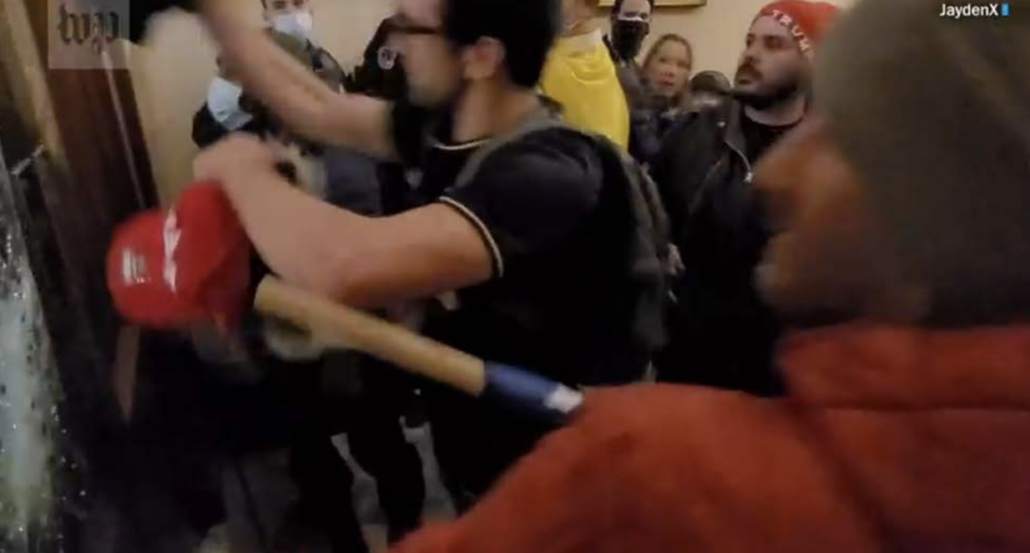
Christopher Grider: Like Alam, Christopher Grider ran to the Speaker’s Lobby after being turned back at the House Chamber. Like Alam, he is charged helping to break through the Speaker’s Lobby doors through which Babbitt jumped. He handed Alam his own helmet, which Alam used to continue beating on the doors. Even after handing Alam the helmet, Grider allegedly pushed and kicked on the doors himself.
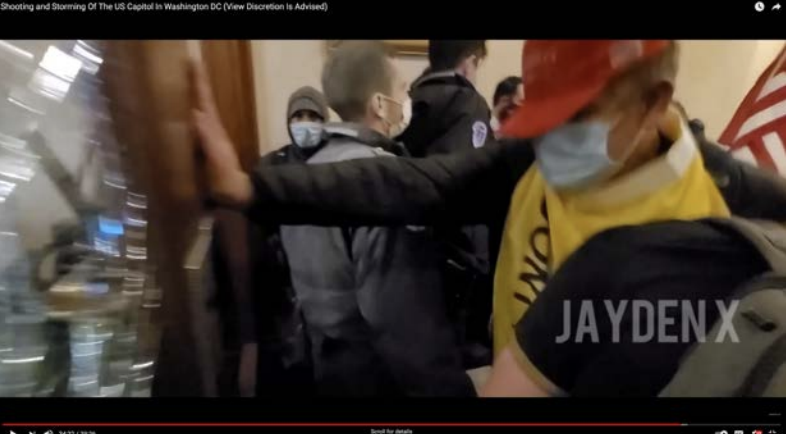
Grider backed away from the door when people started to call out about the gun. But like Peterson, he didn’t leave the scene to let officers respond.
Grider is charged for the destruction to the door, obstruction, and trespassing.
Assault
Brian Bingham: Brian Bingham was arrested June 22 in Alabama (which is neither of the states in which he was known to be living in his arrest warrant, Florida and New Jersey). He had been IDed by people who knew him from the Army with days after the insurrection and posted this photo from minutes after Babbitt’s death to his Facebook account (it’s unclear from the arrest warrant how Bingham’s attempts to shut down his Facebook account failed; possibly they obtained a preservation order).
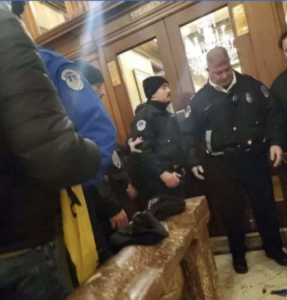
Bingham appears to have been loitering around the East door as if knowing it would open before it did.
Minutes after Babbitt’s shooting, Bingham got in a tussle with two cops trying to expel him (the best footage of which was captured from another rioter’s phone, which may explain the delay in arresting him).
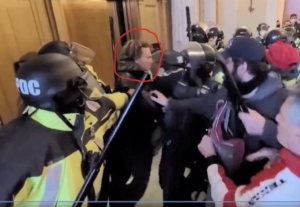
He yelled at them,
“You won’t hurt ANTIFA, but you’ll murder innocent girls!” “Where do you want me to move? Push me again!”
He bragged about the interaction later in the day.
Individual-5: Are you ok?
BINGHAM: I got to manhandl[e] 5 cops and live to tell
Individual-5: Lol… All of this does not surprise me! Stay safe. Trump2020
Bingham is not charged with obstructing the vote (which is surprising for a number of reasons, but may be consistent with an approach of undercharging those present at Babbitt’s death). But he is charged for the interaction with police.
Obstruction
Alex Sheppard: Like many others, Alex Sheppard ran from the stand-off at the House Chamber to the Speaker’s Lobby door, where he was picked up on Sullivan’s video. Presumably because he explained on social media he was driving from Ohio to DC to protest the RIGGED election, he was also charged with obstruction.
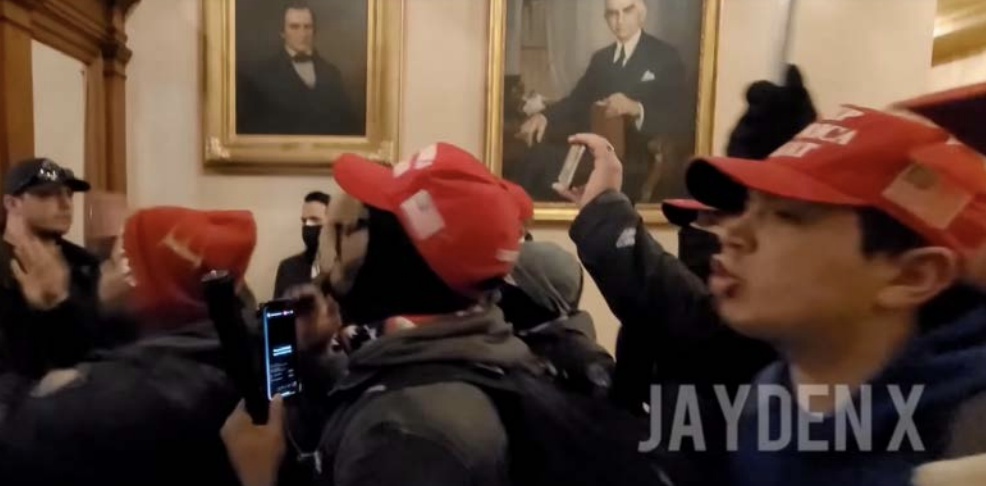
Trespass
Most of the others who directly witnessed Babbitt’s death have been charged with trespass, even though several badgered cops in ways that has gotten others charged with civil disorder or took affirmative steps to halt the vote count that has gotten others charged with obstruction.
Thomas Baranyi: Unlike some others, Thomas Baranyi (who was standing just behind her when she died) admitted that Babbitt died while attempting to breach a heavily guarded door.
We had stormed into the chambers inside and there was a young lady who rushed through the windows. A number of police and Secret Service were saying get down, get out of the way. She didn’t heed the call and as we kind of raced up to try to grab people and pull them back, they shot her in the neck, and she fell back on me.
Like many of the people at the door of the Speaker’s Lobby, he had recently been part of a mob that tried to storm the House side itself, only to try the Speaker’s Lobby next. Baranyi is charged with misdemeanor trespassing.
Ryan Bennett: Bennett was shouting “Break it down” while live-streaming the event as Babbitt was shot.
In Live Video 2, shot from inside the Capitol Building, at approximately the 1:40 minute mark, Bennett seemingly yells “no!” in the direction of a banging noise. In Live Video 4, Bennett seemingly yells “no destruction!” at approximately the 0:40 second mark when someone is seen kicking a door. However, in Live Video 3, Bennett seemingly chants “break it down!” along with the crowd at approximately the 2:47 and 3:54 minute marks. Based on my knowledge of the investigation and the events at the Capitol building, I believe the “break it down” chant was in relation to a door located in the Speaker’s Lobby that was barricaded by USCP and where a woman was later shot. A gunshot can be heard at approximately the 2:42 minute mark of Live Video 4.
Though he wore a Proud Boys hat the day of the riot, which was found when the FBI searched his home, he was charged only with misdemeanor trespass.
Phillip Bromley: According to his arrest affidavit, Bromley witnessed the shooting, and then appeared in a video posted to Parler describing it and stating he was 8 feet away.
In his narrative of events on Video 1, BROMLEY states: “listen…everybody needs to know the truth.” BROMLEY proceeds to describe how he “breached the right side,” “went in,” and “came to two large glass doors.” When he reached the doors, BROMLEY continues by stating he was talking with SWAT officers and reminding them “of their oath,” at which time “a gunshot went off” and a woman was “shot her in the neck.” BROMLEY continues by stating it “did not look like a survivable wound” and that “she [the woman who was shot] was eight feet in front of me on a line.” BROMLEY further describes the clothing he observed the woman to be wearing when she was shot and states “they shot her and she is dead.”
He was charged with misdemeanor trespass.
David Mish: David Mish called cops himself, on January 7, to describe what he knew about Babbitt’s shooting.
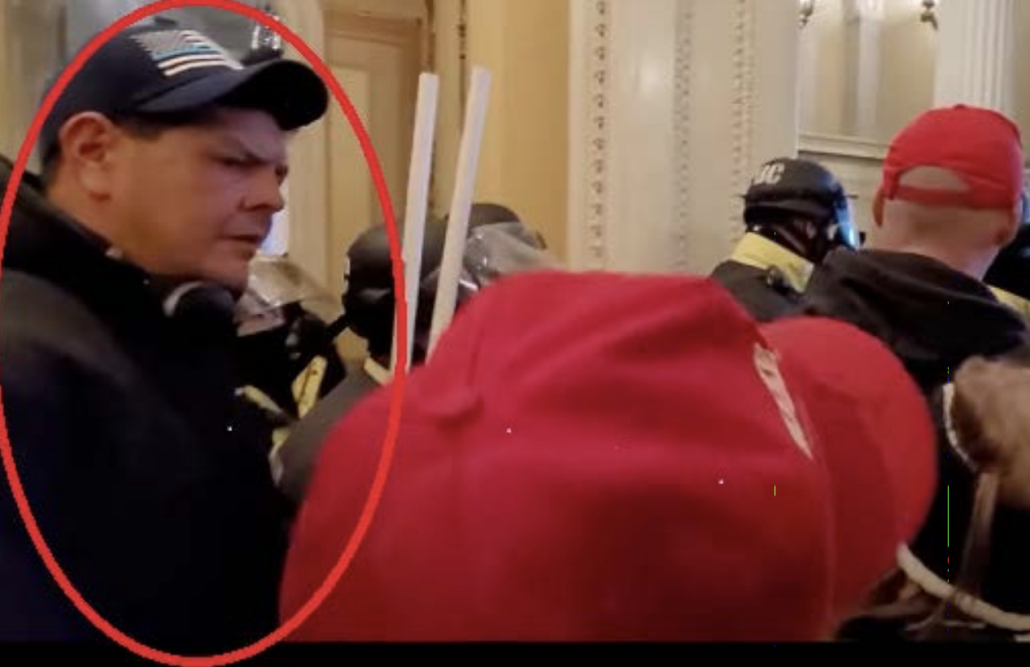
According to Mish, Babbitt was telling the cops to open the door before she died.
On approximately January 7, 2021, David Mish contacted the Washington, D.C. Metropolitan Police Department (“MPD”) stating that he had information to provide about the fatal shooting of Ashli Babbitt, who was shot inside the U.S. Capitol during the civil unrest. On January 8, 2020, Detective John Hendrick of the MPD contacted MISH by phone and recorded the ensuing conversation regarding the Babbitt shooting. MISH stated that he, together with several others, had entered the United States Capitol on January 6, 2021. MISH asked “[b]ecause I entered the Capitol Building are you guys gonna take me to jail? I didn’t break anything. . . . I went in, yes.”
[snip]
In his interview with Detective Hendrick, MISH stated that a group of several individuals went into a bathroom adjacent to the Speaker’s Lobby and he objected when one of the group broke a mirror, stating, “we’re trying to get to the politicians because we wanna voice our . . . we wanna voice to ‘em.” MISH described Babbitt saying to the officer who was at the doorway, “Just open the door. They’re not gonna stop,” or words to that effect, referring to the crowd gathered at the doorway. MISH further stated that he had used his cell phone to record some of the activity that occurred within the United States Capitol. MISH told the detective, “from my video you can tell that I was one of the, I was the first group of people to hit that doorway,” referring again to the locked doorway leading to the Speaker’s Lobby that the rioters were attempting to breach.
That said, perhaps because he reached out to cops himself, perhaps because he claims to have tried to talk others out of damaging the Capitol, DOJ only charged Mish with misdemeanor trespass.
The videographers
Brian McCreary: Brian McCreary self-reported his presence in the riot by sharing video he had taken of the day, including from the Babbitt shooting.
After taking this picture; I decided to leave the building. Walking around the building, found a place to take a nice overhead shot of the crowd. Shortly after I made my way there and managed to take one clip of the crowd; people broke into that very side – so I followed them to see what they were doing. -Clip 20210106_144223 Following said crowd. -Clip 20210106_144434 Crowd breaks glass to Speakers Library, hear a shot fired. -Clip 20210106_144544 Crowd begins a game of telephone with Shot and killed a girl over here. At that point; I decided to leave the site. Walked to parking garage; jumped in my car and drove home. Im now just noticing that I am limited to 4 uploads; I will call and follow-up to provide the rest.
Perhaps because he reentered the building after leaving once, the government charged him with obstruction as well as trespassing.
Sam Montoya: Like John Sullivan, Infowar’s Sam Montoya’s video leads up to the Babbitt shooting. Like John Sullivan, Montoya eggs on the crowd as he films it. “We have had enough! We’re not gonna take your fucking vaccines! We’re not gonna take all your bullshit! The people are rising up!” But unlike Sullivan (and perhaps because of his tie to an actual media outlet), Montoya was charged only with misdemeanor trespass.
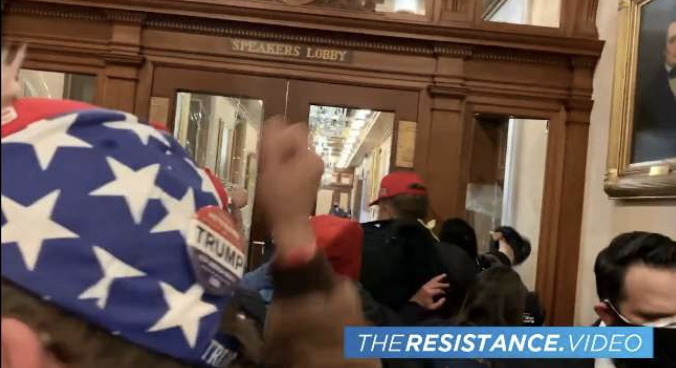
John Earle Sullivan: John Sullivan, whose name came up in texts between his brother and Rudy Giuliani, is the most enigmatic of January 6 defendants. Banned by lefty activists as a provocateur in the months leading up to the insurrection, Sullivan showed up on January 6 and caught key confrontations on video, while he could be heard egging on rioters in his own recording. At first, he was charged with trespass and civil disorder. His first indictment added obstruction and abetting. A second indictment enhanced his charges for carrying a knife during the protest (which he repeatedly asserted on his own video), false statements for denying it to the FBI, and a forfeiture allegation tied to the $90K he made by selling his video of the day (including Babbitt’s shooting). While Sullivan has been given a damage estimate in discovery — possibly tied to a window he seems to describe himself breaking in an office — he has not yet been charged for doing that damage.
The defendant approaches a window and states, “We did this shit. We took this shit.” The defendant also appears to break a window and says, “I broke it. My bad, my apologies. Well they already broke a window, so, you know, I didn’t know I hit it that hard. No one got that on camera.”
Sullivan used his knife — which the government claims he showed publicly in the mob before the House Chamber — both in that mob and later the Speaker’s Lobby to get others to let him up near the front of the mob.
In the moments before Babbitt’s shooting, Sullivan was, just as Babbitt was, cajoling the police to step away from their posts.
After Babbitt’s death, according to the government’s support of seizure of Sullivan’s funds, Sullivan repeatedly boasted both of riling up the mob and of having video he could — and in fact did — monetize.
The defendant also spoke to someone on speakerphone, stating, “I brought my megaphone to instigate shit. I was like, guys we’re going inside, we’re fucking shit up…. I’m gonna make these Trump supporters f—all this shit up…. But I mean you’ll see. I have it all, I have everything, everything on camera, everything I just told you, and I mean everything. Trust me when I say my footage is worth like a million of dollars, millions of dollars. I’m holding on to that shit.”
So while Sullivan has not been charged for breaking a window — which if he were, would make a fifth person present who could be charged with a terrorism enhancement — he was charged with wielding a knife, lying about it, and inciting those around him to riot.
Update, June 24: I’ve added Bingham.

